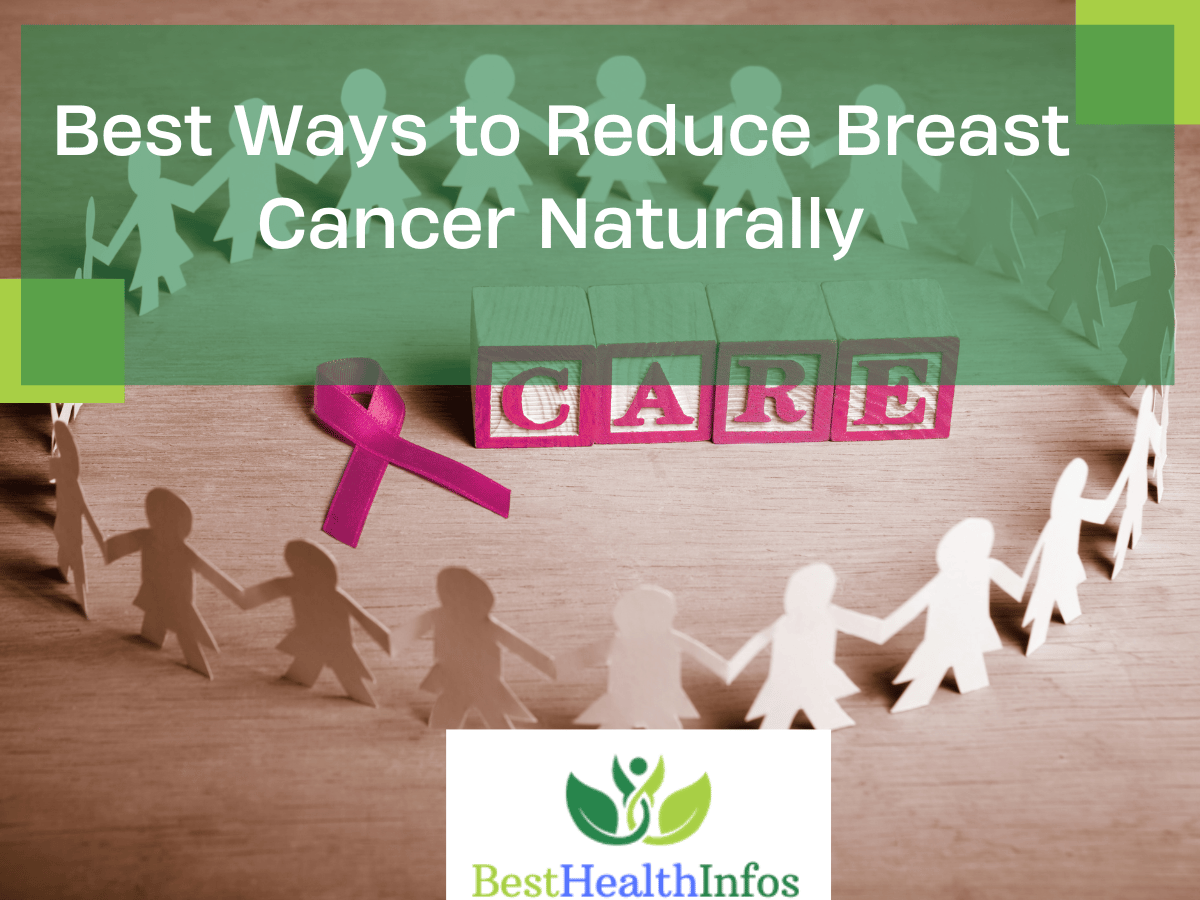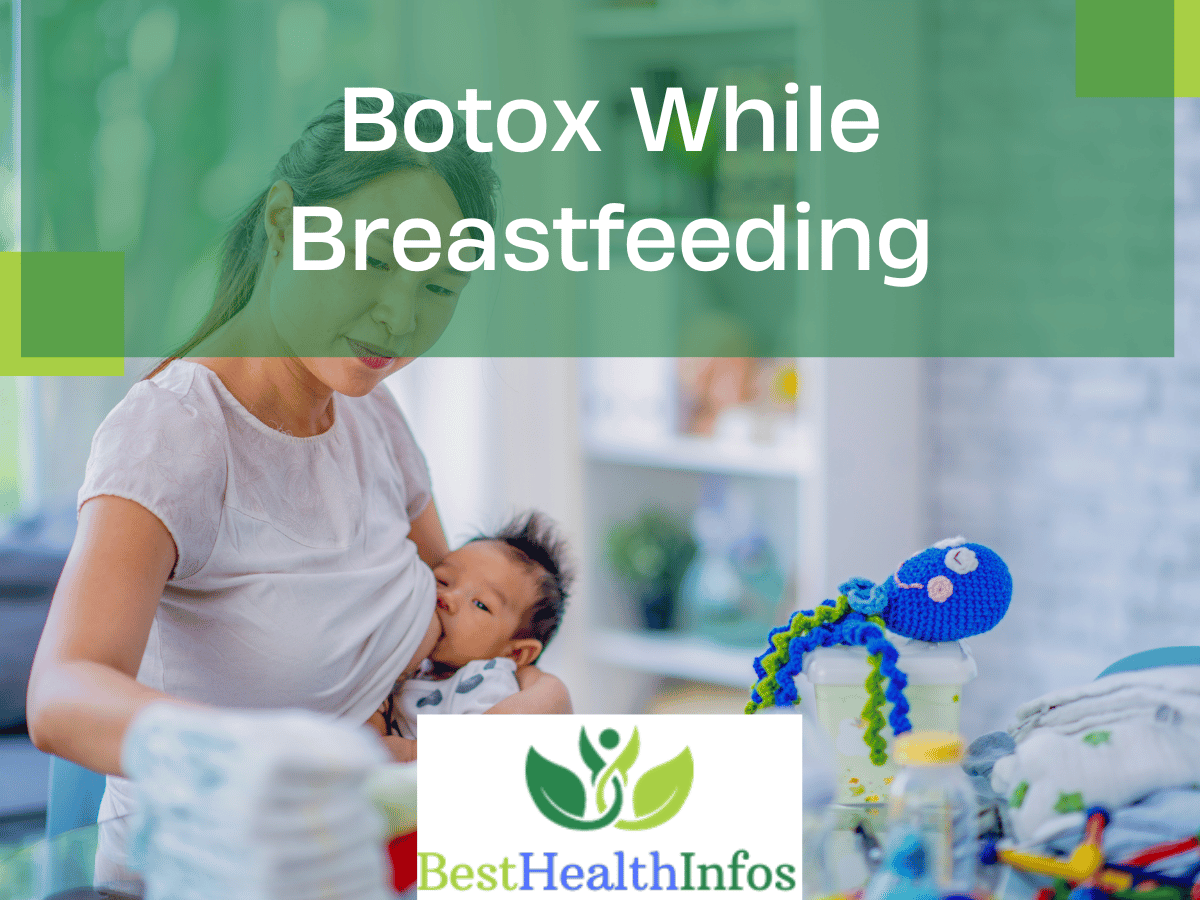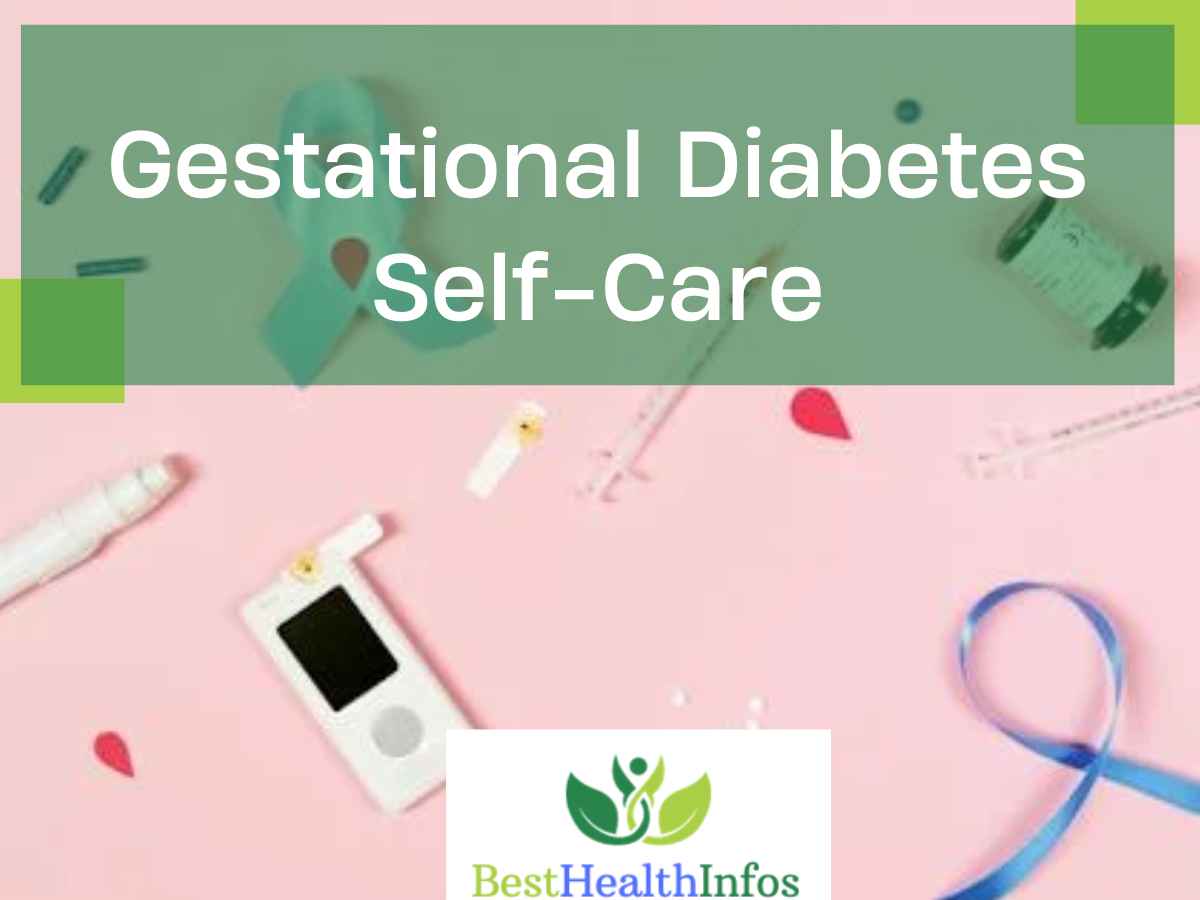Breast cancer is a global health issue that affects millions of people and is quite common. Even though detection and treatment have advanced significantly due to technological developments, prevention must always come first. There are natural methods that can help lower the risk of breast cancer in addition to routine checkups and a healthy lifestyle. We will examine six scientifically supported strategies to naturally reduce the risk of breast cancer in this extensive guide.
Maintain a Healthy Diet:
The ability to eat properly is an integral part of general wellness that helps prevent such diseases as breast cancer. Nutritious diets provide our bodies with important nutrients, antioxidants, and bioactive chemicals which enhance the body’s activities and aid in fighting the growth of cancerous cells. Here’s a detailed exploration of how to maintain a healthy diet for breast cancer prevention:
Emphasize a Plant-Based Diet:
- Fruits and Vegetables:
Ensure you have at least one fruit or vegetable serving in each meal of the day. They consist of vitamins, minerals, fiber, and antioxidants which ensure optimum health. Try using several color pigments as they are usually associated with some health effects.
- Whole Grains:
Ensure that you eat brown rice, quinoa, whole wheat or oats in preference to refined grains. Such whole grains supply long-lasting energy, fiber and important vitamins as opposed to empty calories.
- Legumes and Beans:
Legumes like beans, lentils provide plant based-proteins, fiber and many phytochemicals. It is also low in the glycemic index and thus supports blood sugar control.
Include Healthy Fats:
- Omega-3 Fatty Acids:
Introduce omega-3 fatty acids into your diet—salmon, mackerel, sardines, fatty fish, flaxseeds, chia seeds, and nuts. Omega-3s are also known to be anti-inflammatory and may lead to a lower risk of breast cancer development.
- Monounsaturated Fats:
Pick monounsaturated fat sources like olive oil, avocado, almond or nut. The fats protect the heart and might guard against some cancers.
Cut Back on Processed and Red Meats:
- Lean Protein Sources:
Opt for lean proteins such as plant substitutes, fish, chicken, tofu, and lentils. Eating a lot of red meat or processed meat, which increases the risk for breast cancer, is discouraged.
- Processed Foods:
Eat less of packaged and processed meals for they are high in unhealthy trans fats, artificial additives, and additives. Ensure that you consume well-processed whole foods with utmost focus for maximum nutrition benefits.
Moderate Intake of Dairy:
- Select Low-Fat Dairy:
Always choose low-fat and no-fat dairy if you need them. Breast carcinoma for hormone receptive plus can be increased by taking high fat dairy products.
- Examine Dairy Substitutes:
Soy milk, almond milk or oat milk may constitute good alternatives.
Drink plenty of water and avoid sugary drinks:
- Water:
Drinking adequate quantities of water has implications for good health in general. Keep sugar drinks to the minimum and drink mostly water. Excessive intake of sugar has been linked with a greater likelihood of cancer in the breast and other health challenges.
Limit your alcohol intake:
- The secret is moderation:
if you choose to consume alcohol, do it in moderation. Breast cancer risk can be lowered by cutting back on alcohol to one drink or by not drinking at all.
Exercise Intentional Eating:
- Portion Control:
To prevent overindulging, pay attention to portion sizes. Rather than eating automatically, learn to follow your hunger and fullness signs by practicing intuitive eating.
- Limit Added Sugars and Salt:
Cut back on the amount of foods that have a lot of salt and added sugars. Inflammation has been attributed to be associated with a diet which is rich in sugars while other studies reveal that high sodium is prone to many conditions.
Therefore, it is worth mentioning that breast cancer can be prevented by a healthy diet. People may decrease chances of getting breast cancer when they eat low processed foods containing many vegetables and fruits plus watch out for specific nutrients such as fats, proteins as well as beverages. However, the primary method of breast cancer prevention is a combination of a well nourished balanced diet and a healthy lifestyle.
| Dietary Component | Recommendations |
|---|---|
| Plant-Based Diet | Emphasize fruits, vegetables, whole grains, legumes, and beans |
| Healthy Fats | Include omega-3 fatty acids (salmon, flaxseeds) and monounsaturated fats (olive oil, avocado) |
| Lean Protein Sources | Opt for plant substitutes, fish, chicken, tofu, and lentils |
| Limit Processed and Red Meats | Choose lean proteins and avoid excessive red or processed meats |
| Dairy Intake | Select low-fat dairy or dairy substitutes like soy, almond, or oat milk |
| Hydration | Drink plenty of water, limit sugary drinks |
| Alcohol Consumption | If consumed, do it in moderation, or avoid alcohol altogether |
Regular Physical Activity
Exercising physically forms an important part of staying fit and healthy since exercising has various positive effects on both mental and physical well-being. Exercise also helps in controlling weight and reduces the susceptibility to several other chronic diseases, especially breast cancer. Here’s a detailed exploration of the importance of regular physical activity for breast cancer prevention:
Related Reading: Simple Steps to Naturally Prevent Breast Cancer
1. Weight Management:
- Body Mass Index (BMI):
This is because regular physical activity helps to keep the normal body weight thus, reduces obesity risks. One known risk factor of breast cancer is obesity particularly after the menopause period; which can promote too much estrogen levels within the body.
- Hormonal Balance:
Hormonal balance is influenced by physical activity. One example is how estrogen contributes to certain kinds of breast cancer. The regular physical activity regulates the hormones and therefore decreases the probability of having any hormone related cancer.
2. Immune System Support:
- Enhanced Immune Function:
It is also known that regular exercise improves the immune system’s functionality. It has been proven that a strong immune system will have greater chances and ability to spot and eradicate aberrant cells hence lower chances of developing cancer.
- Inflammation Reduction:
There is an association between chronic inflammation and susceptibility to various disease conditions like cancer. Exercise reduces the amount of free-radical generated during inflammation and therefore lowers any chance of spreading or supporting a cancerous environment.
3. Insulin Sensitivity:
- Blood Sugar Control:
It helps to manage blood sugar levels by enhancing insulin sensitivity. Particularly after menopause, insulin resistance has been linked to an elevated risk of breast cancer.
- Type 2 Diabetes Prevention:
To avoid Type 2 diabetes, you must exercise regularly. Diabetes increases a person’s risk of acquiring many malignancies, including breast cancer.
4. Breast Cancer-Specific Benefits:
- Reduced Estrogen Levels:
Researchers have found that physical activity helps lower down estrogen level circulating. This hormonal modulation is very important because it helps reduce elevated estrogen that may be linked with increased chances of getting breast cancer.
- Improved Lymphatic Circulation:
Such as exercise improves the lymphatic flow by helping the body in eliminating toxins and waste products. The lymphatic system also performs functions like draining excess fluids and filtering potential harmful materials from the body. For all reasons mentioned above, this becomes important for maintaining good breast health.
5. Cardiovascular Health:
- Heart Health:
Consistent exercise is beneficial for the heart since it enhances blood circulation and reduces blood pressure. The cardiovascular system is essential to good health and might reduce the probability of other illnesses like breast cancer.
- Reduced Cardiovascular Risk Factors:
Regular exercise contributes to lowering high cholesterol level and triglycerides, which could indirectly protect against breast cancer.
6. Mental Well-Being:
- Physical activity lowers stress hormone levels, relieving tension. Frequent physical activities like yoga, jogging, or walking improve mental health, and long-term stress increases cancer risk.
- Regular exercise improves mood and sleep, according to research. An adverse relationship may exist between emotional stability and enough sleep and breast cancer risk.
7. Types of Exercise and Duration:
- Exercises that are aerobic include jogging, cycling, swimming, and brisk walking. They also support cardiovascular health and general fitness.
- Strength Training:
Including resistance training, like weightlifting, in your program will help you build muscle, increase your metabolism, and develop overall strength.
- Exercises for Flexibility and Balance:
Mindfulness, balance, and flexibility exercises like tai chi and yoga enhance overall health.
Including regular physical activity in daily life is one proactive and effective way to avoid breast cancer. Aerobic exercise and mind-body activities improve mental and general quality of life in addition to improving physical health. Maintaining a consistent and well-rounded exercise routine is an excellent long-term health investment, as it not only significantly lowers the risk of breast cancer but also enhances overall wellbeing.
| Physical Activity Benefits | Details |
|---|---|
| Weight Management | Regular exercise helps maintain a healthy body weight and reduces obesity risks |
| Immune System Support | Enhances immune function, reduces inflammation |
| Insulin Sensitivity | Manages blood sugar levels, prevents insulin resistance and Type 2 diabetes |
| Breast Cancer-Specific Benefits | Reduces estrogen levels, improves lymphatic circulation |
| Cardiovascular Health | Enhances blood circulation, reduces cardiovascular risk factors |
| Mental Well-Being | Lowers stress hormone levels, improves mood and sleep |
Maintain a Healthy Weight :
In order to maintain general health and prevent several diseases, including breast cancer, weight control is crucial. Good lifestyle choices, consistent exercise, and a balanced diet all contribute to maintaining a healthy weight. A detailed explanation of why maintaining a healthy weight prevents breast cancer:
1. Hormone Control:
- Estrogen Levels:
After menopause, body fat produces a lot of estrogen. Estrogen increases hormone receptor-positive breast cancer risk. Healthy weight regulates estrogen levels, lowering the incidence of certain breast cancers.
- Excess weight can lead to insulin resistance. Postmenopausal women who lose weight and exercise to increase their insulin sensitivity had a decreased risk of breast cancer.
2. Diminished Inflammation
- Chronic low-grade inflammation brought on by obesity raises the risk of breast cancer among other cancers. Retaining a healthy weight lowers the risk of cancer by lowering inflammation.
- IL-6 and CRP are examples of inflammatory indicators that are lowered by weight loss and maintaining a healthy weight, which lowers the risk of inflammatory illnesses such as breast cancer.
3. Better Immune Function:
- Enhanced Immunity:
Obesity reduces the immune system’s ability to recognize and eliminate harmful cells. Healthy weight boosts immunological function, helping the body fight cancer.
- Lymphatic System Health:
A healthy weight stimulates lymphatic circulation, which removes toxins and waste. The lymphatic system fights cancer.
4. Cardiovascular Health:
- Reduced Cardiovascular Risk:
Maintaining a healthy weight reduces the risk of cardiovascular diseases caused by obesity. Overall well-being and cardiovascular health indirectly lower breast cancer risk.
- Controlling weight lowers cardiovascular risk factors like blood pressure and cholesterol. Controlling these factors improves health and reduces breast cancer risk.
5. Diabetes Type 2 Prevention:
- Weight is a key type 2 diabetes risk. Diabetes raises breast and other cancer risks. Weight control regulates insulin levels and reduces diabetes complications.
6. Lifestyle factors:
- Weight management demands a nutritious diet. To promote health and reduce calories, eat complete, minimally processed meals, fruits, vegetables, lean proteins, and whole grains.
- Physical activity is essential to weight management. Regular exercise burns calories, boosts metabolism, and maintains weight. Strength training and aerobic exercise help control weight.
- Adequate Sleep:
Sleep regulates hormones and weight. Sleep deprivation can cause weight gain by disrupting hunger and satiety hormones.
In conclusion, maintaining a healthy weight requires a balanced diet, regular physical activity, and lifestyle choices that promote general well-being. Weight management reduces breast cancer risk by regulating hormones, reducing inflammation, improving immunological function, and cardiovascular health. Keeping weight in check is a smart way to prevent breast cancer and live a healthy life.
| Weight Management Benefits | Details |
|---|---|
| Hormone Control | Regulates estrogen levels, reduces hormone receptor-positive breast cancer risk |
| Diminished Inflammation | Lowers chronic inflammation associated with obesity |
| Better Immune Function | Improves immunological function, enhances lymphatic system health |
| Cardiovascular Health | Reduces cardiovascular risk, controls blood pressure and cholesterol |
| Diabetes Type 2 Prevention | Weight control helps manage insulin levels, lowers Type 2 diabetes risk |
Regular Breast Health Checkups:
Women’s preventive healthcare includes regular breast health examinations to detect abnormalities and breast cancer early and effectively. Early detection greatly improves therapy and recovery. This article details the benefits and components of frequent breast health checkups:
Related Reading: Why Is Natural Prevention of Breast Cancer Important?
1. Breast Self-Examinations:
- Monthly Practice:
Women should self-examine their breasts monthly to learn their usual appearance and feel. In the shower, in front of a mirror, or lying down.
- Changes:
Regular breast exams can reveal lumps, swelling, skin texture changes, and nipple discharge. Inform a doctor of any persistent changes or concerns.
2. Clinical breast exams:
- Professional Examination:
Doctors do clinical breast exams during routine visits. The provider checks the breasts for abnormalities, changes, and concerns.
- Age, family history, and risk factors affect clinical breast exam frequency. Clinical breast exams are suggested every 1-3 years in 20s and 30s and annually in 40s and older for women with an average risk of breast cancer.
3. Mammography:
- Routine Screening Tool:
Mammography is essential for breast cancer screening, especially for women over 40. X-ray imaging of breast tissue detects cancers before they may be felt.
- Early detection:
Mammograms can discover breast cancer early, when treatment is more successful. Mammogram frequency depends on risk factors and medical history.
4. Breast Ultrasound:
- Breast ultrasound can supplement imaging, especially for women with thick breast tissue. This can help when a mammogram is unclear or requires further evaluation.
- Youngers and High-Risk Individuals: Breast ultrasonography may be indicated for younger women or those at higher risk of breast cancer.
5. Breast MRI:
- Breast MRI is advised for women at high risk of breast cancer, such as those with a strong family history or certain genetic mutations (e.g., BRCA1, BRCA2).
- Supplemental Screening:
High-risk populations utilize it alongside mammography for early detection.
6. Genetic Counseling and Testing:
- Risk Assessment:
For women with a family history of breast cancer or other risk factors, genetic counseling and testing may be indicated. Identifying specific genetic variants can guide individualized screening and risk reduction efforts.
- BRCA Mutations:
Women with BRCA1 or BRCA2 mutations may be advised to undergo more frequent testing or explore risk-reducing treatments.
7. Clinical Breast Imaging Centers:
- Specialized Facilities:
Clinical breast imaging centers specialize in breast health and cancer screenings. They often offer a complete variety of services, including mammography, ultrasound, and breast MRI.
- Individualized Care Plans:
These facilities may work with healthcare practitioners to design individualized breast health care plans based on risk factors and medical history.
8. Educational Resources:
- Breast Health Education:
Access to credible educational resources is vital for women to understand the importance of breast health checkups, self-exams, and screenings.
- Awareness Campaigns:
Public health efforts and awareness campaigns play a critical role in encouraging women to prioritize regular breast health checks and screenings.
In conclusion , regular breast health checks are a vital aspect of proactive healthcare for women. By combining self-exams, clinical breast exams, and suitable screenings such as mammography, ultrasound, and breast MRI, individuals can contribute to the early diagnosis of breast cancer. Genetic counseling and testing provide new tools for risk assessment and individualized care.
Education and knowledge are crucial components in encouraging women to take care of their breast health and to engage in frequent screenings as part of a holistic strategy to breast cancer prevention. Regular checkups not only improve early detection but also contribute to general breast health and well-being.
| Breast Health Checkup Components | Details |
|---|---|
| Breast Self-Examinations | Monthly self-exams to detect changes in appearance or feel of breasts |
| Clinical Breast Exams | Professional examinations during routine visits by healthcare providers |
| Mammography | Essential for breast cancer screening, recommended especially for women over 40 |
| Breast Ultrasound | Supplementary imaging for women with dense breast tissue or unclear mammogram results |
| Breast MRI | Advised for high-risk individuals, used alongside mammography for early detection |
| Genetic Counseling and Testing | Risk assessment for women with a family history of breast cancer or specific genetic mutations |
Breastfeed if Possible:
Nursing has health benefits for both mother and baby, and it may protect against breast cancer. Here are some nursing benefits:
- Breastfeeding may reduce breast cancer risk, according to certain research. The protective benefit of breastfeeding increases with time.
- Hormonal Effect:
Breastfeeding temporarily suppresses ovulation and menstrual cycles, limiting a woman’s lifetime exposure to estrogen, which may cause breast cancer.
- Breast Health:
Breastfeeding modifies breast tissue, making cells less likely to become malignant.
- Lactation burns calories, which can help postpartum weight loss. Healthy weight reduces breast cancer risk.
- Baby Benefits:
Breastfeeding boosts immunity, digestion, and decreases infection and chronic disease risk.
- Nursing may prevent breast cancer, but not always. Weight management, exercise, and a balanced diet help prevent breast cancer.
Healthcare providers can offer personalized advice based on family history, overall health, and lifestyle choices for women.
| Breastfeeding Benefits | Details |
|---|---|
| Hormonal Effect | Temporarily suppresses ovulation and menstrual cycles, reducing lifetime estrogen exposure |
| Breast Health | Modifies breast tissue, reduces postpartum weight gain, contributes to overall health |
| Baby Benefits | Boosts immunity, digestion, decreases infection and chronic disease risk |
Limit Hormone Therapy
Since estrogen-progestin combinations enhance breast cancer risk, limiting hormone therapy (HT) is advised. Menopausal symptoms like hot flashes, nocturnal sweats, and vaginal dryness are treated with hormones. Considerations for hormone therapy and breast cancer risk:
- Hormone therapy duration and kind increase breast cancer risk, according to studies. Less than five years is safer than long-term use. Risk can also depend on hormone therapy (estrogen alone vs. estrogen-progestin).
- Individualized Approach:
Discuss hormone therapy with a doctor before using it. Menopausal symptoms, medical history, and family breast cancer history are important.
- For women concerned about hormone therapy’s hazards, non-hormonal menopausal symptoms treatments may be considered. Keeping a healthy weight, exercising regularly, and eating healthily will improve general health and reduce menopausal symptoms.
- Monitor breast health regularly:
Hormone therapy patients should monitor their breast health. Breast self-exams, clinical breast exams, and mammograms as suggested by doctors are included.
Open communication with doctors is essential for women considering or undergoing hormone therapy. Hormone therapy benefits and downsides depend on health. Women with breast cancer, other malignancies, or other health concerns may not need hormone therapy.
| Hormone Therapy Considerations | Details |
|---|---|
| Individualized Approach | Discuss hormone therapy with a doctor considering menopausal symptoms, medical history, and family breast cancer history |
| Monitoring Breast Health | Regular breast self-exams, clinical breast exams, and mammograms as suggested by doctors |
Conclusion
In conclusion, preventing breast cancer requires a plant-based diet, frequent exercise, weight management, and regular breast health exams. Scientifically proven ways empower people to proactively minimize breast cancer risk. Women can improve breast health and early detection by adopting a conscious lifestyle, self-examining, and using screening tools. Education and awareness initiatives help people become proactive about breast cancer prevention by informing and motivating them.
Sources:
https://ncbi.nlm.nih.gov/pmc/articles/PMC4881189/
Frequently Asked Question
1- What kills cancer cells in the breast?
Breast cancer treatment often includes surgery, chemotherapy, radiation, hormone therapy, and targeted therapies. Each of these treatments disrupts cancer cell growth, division, or function to destroy them. Different breast cancer treatments are used depending on kind and stage.
2- What foods keep breast cancer away?
A diet rich in fruits, vegetables, whole grains, and lean proteins may improve health and minimize breast cancer risk.
3- How can I lose my breast cancer?
Surgery, chemotherapy, radiation, and targeted medicines are usually used to treat breast cancer. Healthcare specialists can provide customized guidance and treatment.
4- What not to eat with cancer?
Limit sugary, processed, and red meats and high-fat dairy. Balance your diet with fruits, vegetables, entire grains, and lean proteins. Get personalized diet advice from a doctor.
5- What stops cancer cells from growing?
Chemotherapy, radiation, targeted therapies, and hormone therapy disrupt cancer cell division, growth, and function. Medical professionals can customise treatment plans.




2 thoughts on “Best Ways to Reduce Breast Cancer Naturally”